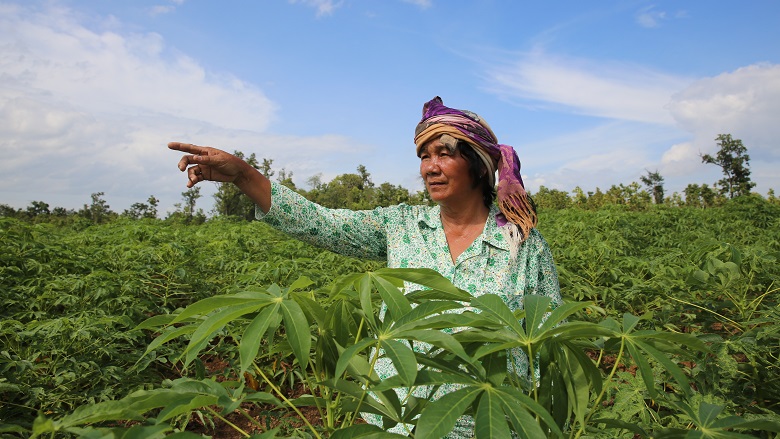Challenge
Improving access to agricultural and residential land is a key issue in Cambodia’s development agenda as 80 percent of Cambodians live in rural areas. The majority of the rural population depends on agriculture for their livelihood. More than 10 percent are landless and a large share cultivates less than 0.5 hectares, which provides for less than half of the basic nutritional needs for a typical rural family. Two-thirds of the country’s rural households still face seasonal food shortages each year.
Approach
Between May 2008 and March 2015, the World Bank-funded Land Allocation for Socio-Economic Development (LASED) Project helped provide land for 4,640 landless and land-poor families in the provinces of Kratie, Kampong Cham, Kampong Thom, Kampong Speu and Kampong Chhnang.
The project involved the transfer of state-owned land to the landless and land-poor. The project used a consultative, transparent and community-based approach to identify the poorest and most in need families to receive the land and to determine the most needed communal infrastructure, such as health posts, schools, access roads and water supply. Building on the success of the first LASED project, LASED II began operations in 2016. The project builds schools and health posts which are accessible to both project beneficiaries and to the wider community.
Results
The Second Land Allocation for Social and Economic Development Project (LASED II), which was approved in May 2016, has helped to improve access to agricultural resources, infrastructure and social services for many citizens in rural communities. Between May 2016 and June 2019 the project has achieved the following results:
- 17,000 hectares of residential and agricultural farm land have been given to 5,010 landless and land-poor families
- 3,078 land titles have been distributed to 1,825 of these families (as of August 2019).
- The project provides improved agriculture extension services, enabling beneficiaries to make the best use of the land and engage in agriculture activities and foster more sustainable community development. Out of a total number of 5,522 trainees, 78.4 percent or 4,330 participants (1,522 female trainees) expressed satisfaction with the trained agriculture technique and have started applying the techniques.
- 3,096 land recipients have adopted improved agriculture technology.
- Of the agricultural land has been allocated so far, 70 percent (4,963.25 ha) are currently cultivated with annual and perennial crops.
Bank Group Contribution
The World Bank has provided financial support with US$25.6 million.
Partners
A partnership project financed by the GTZ, the German Development Agency, provides technical assistance and the Government of Cambodia has contributed US$1.0 million to the project.
Moving Forward
Drawing the success from LASED II, the government has asked the World Bank to build on LASED II to cover other provinces under a proposed LASED III project.
Beneficiaries
Pak Touch, a 59-year-old widow, earns an average of about 10 million riel (US$2,500) annually from her cassava plantation. She farms on part of the three hectares of land she received as part of the Land Allocation for Social and Economic Development Project (LASED).
“Look! My cassava is growing well this year. I hope I will earn more,” she smiles while pointing to her crops.
Pak Touch is one of 623 poor and former landless families in Sambok and Changrang communes of Kratie province who were granted residential and farming land under the LASED project, supported by the World Bank. She and other families moved here in 2008. In her new place, Touch has tried her best to build a better life for her family. She started by growing vegetables and raising chickens. With her earnings, she started a small shop selling items such as salt, pepper, fish sauce, and rice.
A few years after she moved in, Touch called her four children to come back home to work on her new land. One of her sons opened a motorbike repair shop in her community. He trained his younger brother, who opened another repair shop in a nearby community. Her other two children help her to farm and run her shop.
“Now we’re better off. Besides farming, we have family shops that help us to earn more income,” Touch said. “Before, I was always looking for someone to hire me. We didn’t have enough food to eat.”
